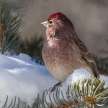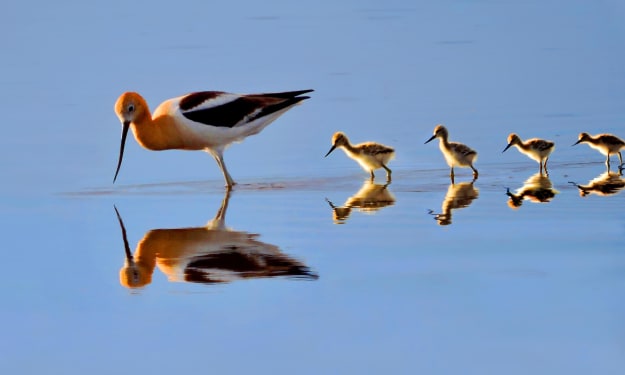
American Bittern (Botaurus lentiginosus) is a genus within the family of heron wading birds. It has a presence in the Nearctic, breeding in the United States in Canada and in the northern and southern areas, and wintering in the United States. The Gulf Coast covers Florida areas into the Everglades, the Bahamas coasts and Central American territories. It is a well-camouflaged, solitary brown species that unobtrusively inhabits marshes and scattered vegetation at the edge of the lakes and wetlands. During the breeding season, the male’s loud, roaring call often becomes evident. The nest is built just above the grass, usually between bulrushes and cattails, where for about four weeks, the female clutches the olive-colored eggs. The juveniles abandon the nest within two weeks and flee entirely at six or seven weeks. The American bittern primarily feeds on fish, but also eats other small vertebrates, crustaceans, and insects. It is relatively common across its large range, but its numbers are thought to be declining due to habitat loss, particularly in the south. However, the total population is high, and the International Union for Nature Conservation has ranked its environmental status as "the last concern. “The American bitterness is a large, chunky, brown species, somewhat like Eurasian bittern but much smaller, except that instead of barred, the plumage is sprinkled. It is 58–85 cm long, 92–115cm wingspan, and 370–1.072 g body mass.
The crown is deep chestnut, with cream feathered. There’s an elongated bluish-black band on the neck side and the male is bigger than the female. The hind neck is orange and dark brown chestnut is the mantle and scapulars, barred and dotted with black, with a few feathers edging with a buff. The back, rump, and upper tail-covers are similar in colour, but the feathers are more speckled with black and grey bases. The tail feathers are chestnut brown with speckled edges, and the primary and secondary feathers are blackish-blue with buffs or chestnut tips.
The cheeks are smooth, similarly coloured withal supercilia boundary buff and a moustachial line. The chin is creamy-white with a central chestnut line, and the back, breast, and upper abdominal feathers are buff and rust-colored, finely browned with black, giving a rasped look to the underparts. Black colour, with light-yellow iris under the eyes. The long, sturdy bill is yellowish-, the upper mandible is darker than the lower one and yellowish- feet and legs. Young ones pose as adults, but colour of their collars is less dark. The scope covers most of North America. This is occurring in southern Canada as far north as British Columbia, the Great Slave Lake and Hudson Bay, as well as in areas of the U.S. and even central Mexico.
It migrates to the south during the fall and overwinters in the southern United States ' Gulf Coast region, most notably in Florida's marshy Everglades, the Caribbean Islands, and Mexico, with older reports also coming from Panama and Costa Rica. It’s a very unusual European vagabond for along-distance visitor, much like Great Britain and Ireland. It is a coastal environment that includes marshes of freehand brackish or polluted water, thickly vegetated lakes and wetlands. It also feeds out in the open on lush prairies and pastures. The American bitterness is a single phenomenon, which is normally carefully kept secret and not visible.
It normally hides in deeper water and among the leaves by stealthy walking, watching its prey, but sometimes standing in ambush, too. If he thinks he's been spotted, he remains motionless, his bill pointing upward, his mysterious colouring helping him to blend into the foliage around him. This is mainly nocturnal, andic most active at night. The male agitation has a loud, roaring call, heard more often than seen, which resembles an overburdened pump and is made as "oong, kach, oonk." When that sound is uttered, the bird's head is thrown backwards and then convulsively forward, and the sound is repeated up to seven times.
About the Creator
MB
I am a bird aficionado and really enjoy spotting them them on hikes. I greatly appreciate the variety of birds cross North America and the world. They are amazing and intelligent creatures, each so unique and with a wonderful life.






Comments
There are no comments for this story
Be the first to respond and start the conversation.